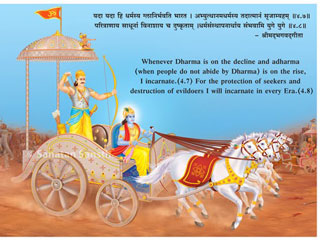| More than thirty two years ago, Kashmiri Hindus experienced unimaginable devastation when they were cleansed from their ancestral Homeland. Events on 19th January 1990 reached a fevered pitch and culminated in mass panic and the forced displacement of over 350,000 people, or over 90% of the Kashmiri Hindu population. Newspapers, posted fliers, mosques issued declarations that called Kashmiri Hindus kafirs (Infidels) and asked them to leave Kashmir, convert to Islam, or they would be killed. The religious persecution and ethnic cleansing of Kashmiri Hindus from the Valley resulted in a sudden demographic change that would forever change the Kashmir Valley. In the months after 19th January 1990, hundreds of thousands of displaced Pandits were forced to live in refugee camps in the neighbouring region of Jammu and in other parts of India, and some camps still exist today.
‘Panun Kashmir’, an organisation representing displaced Kashmiri Pandits, observes the Kashmiri Hindus ‘Homeland Day’ on 28th December. For ‘Panun Kashmir’, it is a day of reaffirmation for the entire religiously cleansed Kashmiri Pandit community to carry on the struggle for the reclamation of their ancestral land on their own terms with the free flow of the Indian Constitution in Kashmir so that the dignity, honor and rights of the persecuted community are restored in letter and spirit. Nothing short of Homeland will satisfy the persecuted Kashmiri Pandits. Here, we briefly try to make the readers aware of what their brethren have faced in Kashmir. |


The name of ‘Kashmir’ valley is derived from the name of Rishi Kashyapa, the progenitor of all those living in Bharat Varsha. Kashmiris have played an integral role in Hindu civilization – Kalhana authored ‘Rajatarangini’, the first written history of Kashmir and contemporary Bharat.
But Kashmiri Hindus have faced genocide for over 800 years – there have been seven exoduses since the first Muslim rulers invaded Kashmir. Even according to a Muslim scholar Al-Beruni, Kashmir and Varanasi were the main centers of Hindu learning, and hence Kashmir, besides Varanasi, has been a target of those who invaded India in order to spread Islam, with the might of their swords, from the beginning. When we read Muslim texts such as Bahristan-i-Shahi, we can imagine the kind of barbarism unleashed on Kashmir; but the Kashmiri Pandit exodus in 1989-90 was the most shameful episode in our history because it happened in a ‘secular’ Democratic Republic of India and also in the era of great ‘human rights’ movements !
The signs were ominous right through the autumn of 1989 – posters were pasted on the doors of Pandit houses, asking them to convert, flee or perish. On the night of 19th January 1990, things reached a fever pitch – mobs of ordinary Muslims gathered in every street, whipped into a frenzy by wicked slogans which rang out from the loudspeakers of mosques. One such wicked slogan was – ‘Asi Gachchi Pakistan, Batao Roas Te Batanev San’ (We want Pakistan along with Hindu women but without their men).
Many Kashmiri Pandits fled the very next day. In April 1990, a Kashmiri Pandit nurse Sarla Bhat was gang-raped and beaten to death; in June 1990, Girija Tickoo was also gang-raped and then sliced at a sawmill. Over 450 temples were destroyed and 10,000 houses were razed to dust in the following years.
Kashmiri Pandits were forced to live in camps without toilets, water, electricity – 250,000 people lived in these conditions for 17 years. A few Pandits who dared to stay back faced massacres from time to time. The book – ‘Our Moon Has Blood Clots’ – by Rahul Pandita, tells us the untold story of the exodus of the Kashmiri Pandit community from their ancestral Homeland.
As if their exodus was not enough, the killers of Kashmiri Pandits such as Bitta Karate (who murdered over 40 Pandits) and JKLF Chief Yasin Malik (who self-admittedly killed unarmed Indian Air-force men) roamed free all these years (till they were arrested recently), bearing a shameful testimony to our impotence to ensure justice to the persecuted Hindus of Kashmir. What this religious cleansing of Kashmiri Pandits shows is that we choose to live in denial and tend to treat such genocides as though they never took place.
Recently, an Israeli Leftist filmmaker and International Film Festival of India (IFFI) jury Chairman Nadav Lapid called Vivek Agnihotri’s film ‘The Kashmir Files’ (on the Hindu Genocide in Kashmir) vulgar and propaganda.
Comparing the events of 1990 with the current circumstances in the State is utterly despicable. However, the dominance of the Left in the corridors of power has made it entirely acceptable to deny the genocide of Hindus. Hindus suffered 4 genocides in the 20th Century alone and yet, human rights defenders pretend as if these never happened.
Genocide denial is not only acceptable conduct in the Left-Liberal world, it’s also one of the pillars of Indian secularism. Unless people deny that Hindus suffered genocides in the 20th Century, they shall not be regarded as ‘intellectual’ or representatives of ‘civil society’.
(Courtesy : ‘Hindupost.in’ and ‘Opindia.com’)
Killers of Kashmiri Pandits roamed free, bearing a shameful testimony to our impotence to ensure justice to the Hindus !

 Radiant Thoughts of Sachchidananda Parabrahman (Dr) Jayant Athavale
Radiant Thoughts of Sachchidananda Parabrahman (Dr) Jayant Athavale Law banning Conversion of Religion is against Individual Freedom : Babbles Former Judge S Muralidhar
Law banning Conversion of Religion is against Individual Freedom : Babbles Former Judge S Muralidhar Editorial : Khalistan, Balochistan and Pakistan
Editorial : Khalistan, Balochistan and Pakistan After India becomes a ‘Hindu Rashtra’, Russia will embrace Hinduism and spread it globally : Nostradamus’ Prophecy
After India becomes a ‘Hindu Rashtra’, Russia will embrace Hinduism and spread it globally : Nostradamus’ Prophecy ‘Halt Public Spending on Aurangzeb’s Tomb, Prioritise Maharashtra’s Heritage’ : HJS
‘Halt Public Spending on Aurangzeb’s Tomb, Prioritise Maharashtra’s Heritage’ : HJS Noise Pollution, Loudspeakers, and the Law
Noise Pollution, Loudspeakers, and the Law